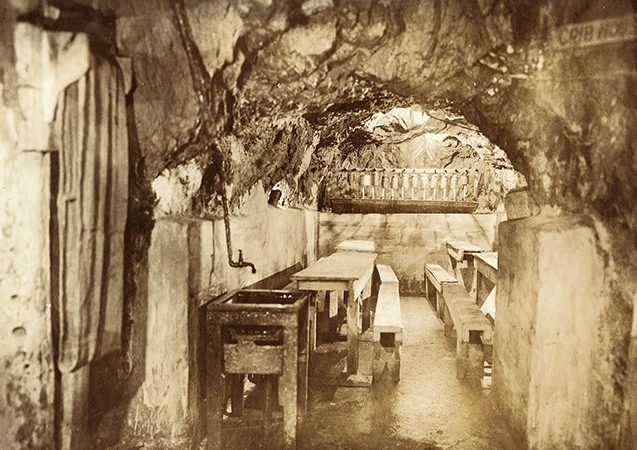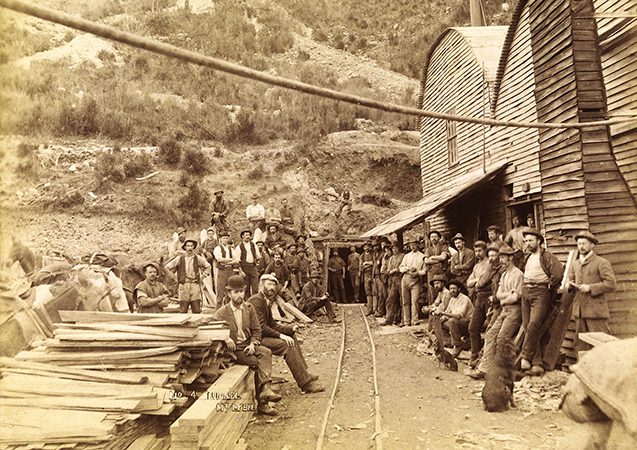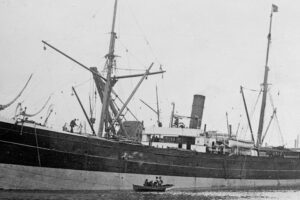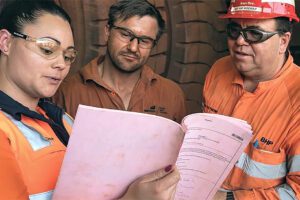The Mount Lyell mine disaster of 1912 was a great personal tragedy, however, the aftermath also proved a great travesty of justice, writes T.R. Mackay.
The tragedy unfolded around 11.15am on 12 October 1912 when a fire was reported in the pump house of the 700 foot level. Out of 170 workers, only 73 men escaped on the first day. Those that had not already died, remained trapped.
The rescue effort for the Mt Lyell mine disaster was one of the biggest undertaken for the time. Fire crews and equipment were rushed by train in record time from Hobart and also shipped from Bendigo in Victoria, across Bass Strait. The S.S. Loongana, the ship which crossed the Strait carrying the equipment, made the crossing in 13 hours, 35 minutes – a record which stood for many years. Rescue efforts continued for four days with the last of the survivors brought to the surface more than 100 hours after their eight hour shift began.
The cause of the disaster, is still to this day, under debate.
Surprisingly, considering how many lives were taken, the Mount Lyell disaster did not involve an explosion, gas leak, earthquake or cave-in.
READ RELATED CONTENT
- Sampling tube leaking | Police Conveyor belt concludes
- Mexico pledges to recover miners from 2006 disaster
- Pike River evidence handling a disaster in itself
- Pike River survivor tells his story
The fire itself was not particularly dangerous, however the smoke it produced and the oxygen it consumed stole the breath from the trapped miners’ lungs and ultimately took their lives. Many miners who initially survived and made it to the surface later succumbed due to lungs irreparably ravaged by smoke and fumes.
Many of the victims were trapped by the fire as they worked in remote stopes. With absolutely no emergency warning system in place, most workers did not know about the fire until it was too late. Anecdotes later surfaced of men running along the levels and drives, yelling warnings to their fellow workers about the fire’s imminent threat. A truly horrifying situation for today’s safety professional to contemplate.
The Royal Commission into the fire returned an open finding at the time, however mine owners claimed the initial small fire was started by a disgruntled employee and unionist, eager to discredit the mine.
Speaking to the ABC in 2012, former MP Peter Schulze, author of a book on the subject, An Engineer Speaks of Lyell, refutes the findings of the Commission and the claims of the mine owners, and offers his own explanation.
“They suppressed evidence of a number of electrical fires that had already occurred in the underground pump station,” Mr Schulze said.
“The commission said there’d only been one electrical fire when there was evidence of five electrical fires and the pump station was extremely dangerous electrically.
“There were no fuses in the control circuits and on two of the previous occasions where there had been fires, they had to switch off the power to be able to put the fires out.”
Mr Schulze claims his research proves that most of the evidence provided to the Commission by the mining company was false and misleading. According to Schulze, some ‘expert’ witnesses informed the Commission that electricity ‘could not cause fires’ and gave misleading information on how some mining equipment operated.
False information was also given to the Commission on the existence of more than one exit to the mine shaft.
Even by the poor standards of the day, the Mt Lyell mine did not have a reputation for high safety standards. Just three weeks before the disaster, two miners were killed and several others were injured when one of the walls of a stope partially collapsed. This event was followed by a three day strike during which the workers demanded better safety standards and more thorough safety inspections
Hobart’s The Mercury newspaper reported on a meeting held by the Federated Mine Employees’ Association on 29 September 1912, just two weeks before the disaster:
The question of the working conditions at the Mt. Lyell Co.’s mines was brought up, and several practical miners spoke. They said that the stopes were practically unsafe to work in. ‘One stope at the North Lyell mine, it was said, had nearly 50ft. of open country between the floor and the back. Further, it was alleged that there was at present a creep in the same mine, and the fear was expressed that there would be an immense collapse.
The mine had also registered accidents with multiple fatalities in 1902, 1903 and 1908. A safety record of this kind would immediately close a mine site today, however in the early part of the 20th Century conditions such as these were, sadly, all too common.
“Even by the poor standards of the day, the Mt Lyell mine did not have a reputation for high safety standards.”



THE FOLLOWING EXTRACT WAS PUBLISHED IN THE ADVERTISER (SA) ON WEDNESDAY 16 OCTOBER 1912.
HEROIC DEEDS
MEN WHO COULD HAVE ESCAPED WENT BACK TO HELP THEIR MATES IN THE Mount LYELL MINE DISASTER
Deeds of heroism and superb courage are many in connection with the disaster. The more notable are the cases of Messrs. S. Brav, R. Treverton, R. Lonsdale, Wm. John Bolton (shift boss) and Thos. Gays. These, with others, were on the plat on Saturday, and it was learned early this morning that they could have got out, but that they saw a number of men staggering in the smoke almost overcome, and instead of saving themselves they calmly returned to succor as best they might those who were in a bad plight. Mr. Bolton was up to No. 2 drive twice but returned to look for his mates. Mr. Gays rose to the height of absolute heroism. The cage was ready to come up when he saw a married man on the plat. He calmly stepped out of the cage into the blinding smoke and sent it up the shaft. That was the last cage that left.
LETTER FROM THE GRAVE – Mount LYELL MINE DISASTER
One of the first rescue parties to reach the 700 foot level found a group of deceased men. One of the deceased, Joe McCarthy, left a note pinned to a timber with a “spider” (a tool used by miners to hold their candles). The note read: “Seven hundred level. North Lyell mine, 12-10-12. If anyone should find this note convey to my wife. Dear Agnes. – I will say good-bye. Sure I will not see you again any more. I am pleased to have made a little provision for you and poor little Lorna. Be good to our little darling. My mate, Len Burke, is done, and poor old V. and Driver too. Good-bye, with love to all. Your loving husband, Joe McCarthy.”
Read more Mining Safety News














[…] are the final words of a man to his wife, a man about to perish in the ?North Mount Lyell disaster?, one of the greatest disasters in Australian mining history. On a late Saturday morning in 1912, […]